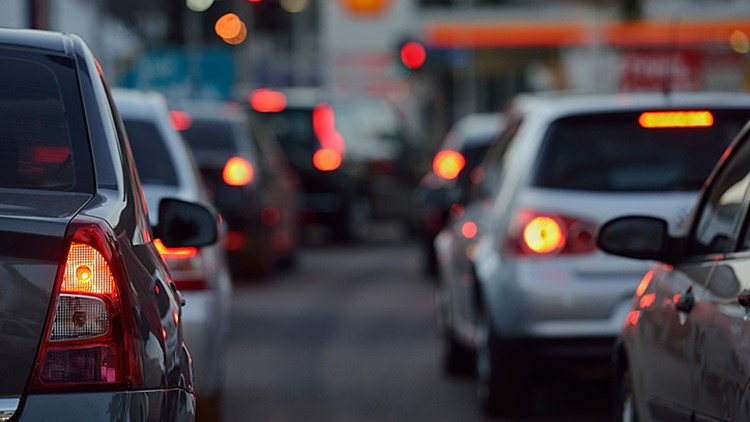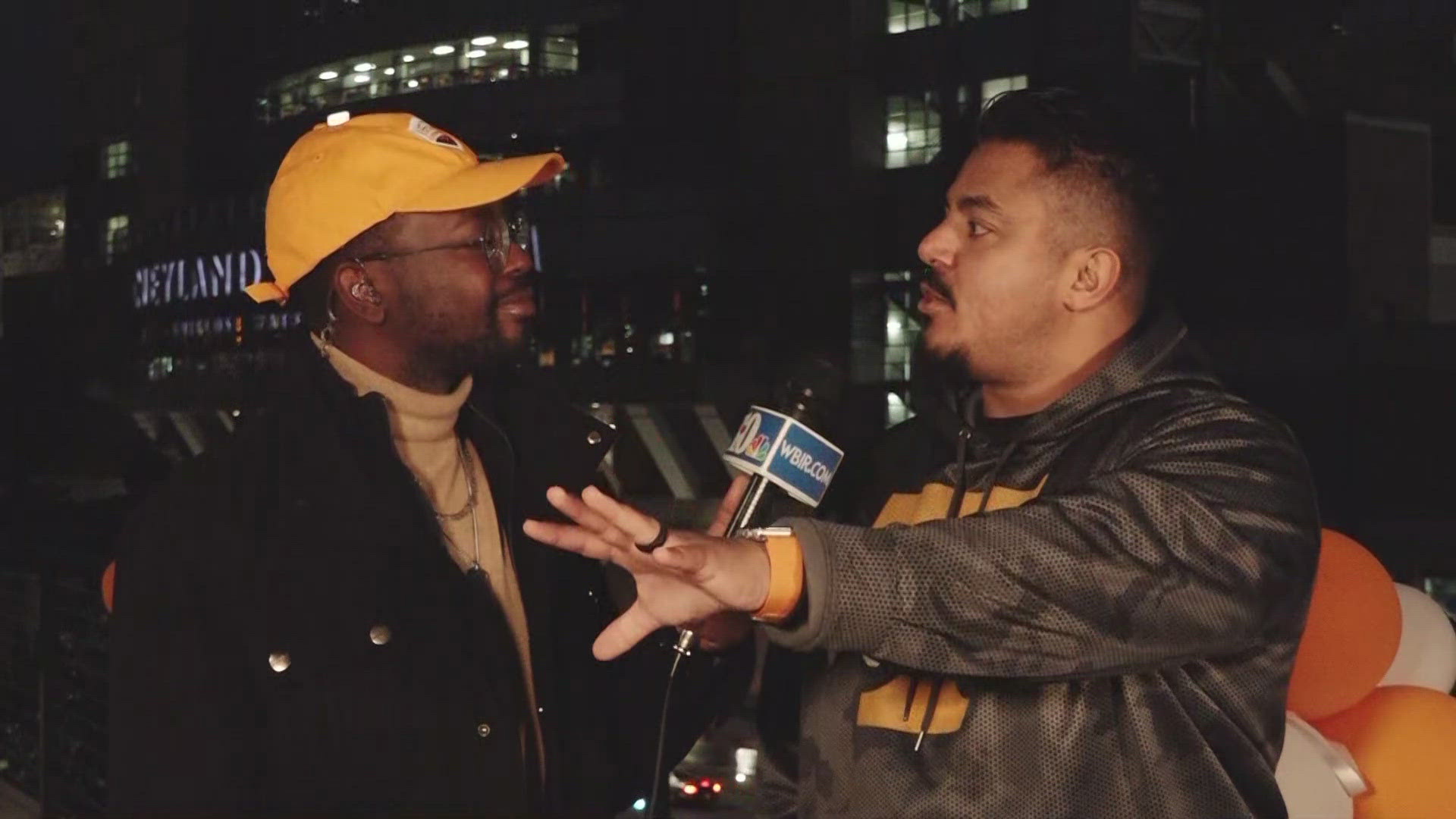DETROIT — A few simple tips can save you time and reduce frustration in heavy traffic and construction zones whether during your daily commute or a summer vacation drive.
Tempers can flare when you're trying to get home or to your destination while the sun is still shining. And while road rage is never the answer to any traffic problems, these suggestions can help you get to where you're going with less stress —and in many cases sooner.
“If you want to arrive earlier, the best thing to do is learn the traffic pattern and leave 5 minutes earlier," said Teresa Qu, a Michigan State University associate professor of urban and regional planning.
The experts’ latest advice:
1. Use the zipper merge
The quickest, most efficient way to merge for a construction zone probably isn’t what you think it is. The “zipper merge,” in which vehicles run in parallel until one lane physically narrows, is better for traffic flow than when vehicles form a single line early.
Yes, that means the driver you cursed for “cheating” by passing you in the empty lane after you politely merged into the through lane a half-mile before the construction zone was helping traffic flow more than you. Sorry.
An increasing number of states encourage drivers to use the zipper merge. Some even have created flashing signs showing how and where to merge.
“It’s important to merge smoothly, not to make sudden lane changes,” Qu said.
2. Don't weave in traffic. It really doesn't help.
If you routinely jump from one lane to another to get around a slower vehicle, you save less time than you think and are more likely to add to congestion or be involved in an accident.
David Hyde of Sound Qs on public radio station KUOW-FM, Seattle, recounts a commuting comparison in his city's congested traffic. The result: He arrived about a block ahead of, and way more stressed out than, the driver who stuck to a single lane.
Multiple experiments show that highway weavers may save a minute or two in an hour-plus drive.
In exchange for that, every lane change can triple the likelihood of an accident, according to a study that also showed that lane jumpers save less time than they think and are usually wrong when they think the next lane is going faster in heavy traffic, according to research from Donald A. Redelmeier of the University of Toronto and Robert J. Tibshirani of Stanford University.
Lane changes make sense to avoid a line of slow trucks, a single drastically pokey lane pirate, an accident or other obstruction. Otherwise, leave space on the right for entering and exiting traffic and travel in the other lanes.
“Nobody likes to be stuck in traffic, but when you change lanes, you usually realize it's not moving any better.” MSU’s Qu said. “If you want to arrive earlier, the best thing to do is learn the traffic pattern and leave 5 minutes earlier.
“Traffic apps like Google Maps and Waze can also provide alternatives that help you save time,” she said. (Apple Maps still needs work, based on my experience on a couple of recent trips.)
3. Use adaptive cruise control to end phantom jams
An increasingly common driver-assistance feature can reduce or eliminate the maddening traffic slowdowns in which multiple highway traffic lanes slow, come to a nearly complete halt and then resume speed for no apparent reason.
New research from Vanderbilt University and Ford Motor Co. shows that using adaptive cruise control can end those “phantom” traffic jams, which frequently coincide with a mild curve on a highway. The slowdowns occur when a single driver brakes and drivers behind that vehicle overcorrect, braking more and more as the slowdown spreads.
“Every time you brake in traffic, it creates more congestion with a ripple effect downstream,” Qu said.
Cars at the tail end of the phantom jam sometimes are forced come to a complete stop even though nothing happened ahead of them.
Adaptive cruise control, which uses radar, automatic brakes and other systems to maintain a set distance from the vehicle ahead, reduces phantom jams because it only applies brakes when it has to, and is less likely to overbrake than human drivers. It also helps vehicles resume speed smoothly after a slowdown.
The experiment used a fleet of 36 drivers in three lanes on a closed high-speed test track.
In experiments on Ford's closed high-speed test track in Romeo, Mich., the tail car in each lane slowed by just 5 mph, rather than coming to a complete stop when each driver braked manually.
The result was nearly as good when just a third of the test vehicles used adaptive cruise control and the drivers controlled the other cars.
“Adaptive cruise control systems don’t get tired or distracted. They’re consistently looking at the vehicle ahead,” said Michael Kane, Ford's supervisor of the technology.
“Plus, they are programmed to provide more consistent distances between vehicles so they can better respond to the speed and distance of the vehicle ahead,” said civil engineering professor Daniel Work of Vanderbilt University in Nashville, Tenn.
Not all adaptive cruise control systems are created equal. Some are conservative and leave big gaps between vehicles. They are less suitable for heavy-traffic situations such as the ones that Ford and Vanderbilt tested.
4. Learn to drive smoothly around traffic circles
Traffic circles, or roundabouts, are becoming increasingly common, but most drivers don’t know the best way to use them.
The answer: Merge smoothly into the flow around the circle. Don’t stop unless the traffic has no gap. Traffic circles were created in Europe to reduce the number of stop signs at intersections and promote traffic flow.
Drivers already in the circle always have right of way, but you can merge into the outside lane while a car goes by in the inner lane. Some traffic circles have more than one lane.
Which one you should use depends on how far around the circle you’re going. Use your turn signal to indicate when you’re ready to leave the circle.
One of the great things about traffic circles is that you always can go around again if you miss your exit or accidentally end up in the wrong lane.
“Drive smoothly into the circle,” Qu said. “That helps you get through the intersection quickly. It’s a very efficient traffic design.”
Unfortunately, traffic circles were rare when many people learned how to drive, so they’re learning on the road. Most new drivers learn how to use traffic circles in theory though they may not get to practice on them.
“Driving tests should require understanding of roundabouts,” Qu said. It’s up to the city and the state department of transportation to educate people.”
Follow Mark Phelan on Twitter: @mark_phelan



